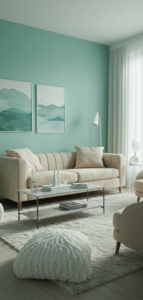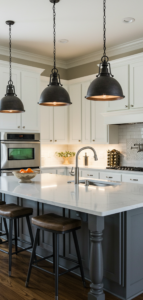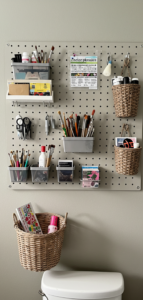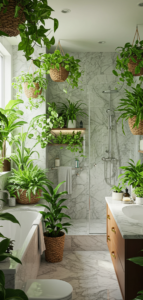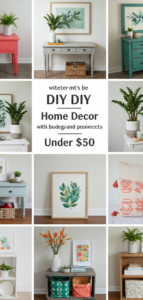Coastal interior design evokes a sense of tranquility, reminiscent of sun-kissed beaches and gentle ocean breezes. Imagine stepping into a space adorned with soft blues, sandy beiges, and crisp whites that instantly transport you to a serene seaside escape. The light and airy vibes create an inviting atmosphere, making it the perfect choice for those yearning for a peaceful retreat within their own homes.
Jump to:
- <strong>1. Embrace a Soft Color Palette</strong>
- <strong>2. Layer Textures for Depth</strong>
- <strong>3. Incorporate Natural Elements</strong>
- <strong>4. Focus on Open Spaces</strong>
- <strong>5. Use Nautical Decor Wisely</strong>
- <strong>6. Choose Light Fabrics</strong>
- <strong>7. Create Outdoor Connections</strong>
- <strong>8. Opt for Sustainable Materials</strong>
- <strong>9. Maximize Natural Light</strong>
- <strong>10. Personalize Your Space</strong>
- <strong>FAQ</strong>
This style isn’t just about aesthetics; it’s about embodying a lifestyle that embraces relaxation and comfort. Whether you’re sipping coffee while gazing out at the waves or curling up with a good book surrounded by beachy decor, coastal design brings the outdoors in, reminding us of summer days spent by the shore. With this ultimate guide to coastal interior design, you’ll learn how to achieve these light, airy, and beachy vibes in your own home.
1. Embrace a Soft Color Palette

I still remember the first time I painted my living room in soft seafoam green. The moment I stepped back to admire my work, my family members were captivated by how fresh and calming the room felt. It transformed our home into a peaceful haven.
When it comes to coastal interior design, embracing a soft color palette is paramount. Think of colors inspired by nature: cool blues reminiscent of ocean waves, sandy beiges that mimic the beach, and crisp whites reflecting clouds on a sunny day. These shades not only create an airy feel but also enhance natural light, making spaces feel larger and more inviting. Combine these hues through wall paint, furniture upholstery, and decorative accents to establish a cohesive look that breathes tranquility into your home.
2. Layer Textures for Depth

I recall hosting a summer gathering where my guests couldn’t stop touching all the different textures I’d incorporated into my coastal decor. From woven baskets to soft linen throws, everyone loved how inviting it felt!
To evoke the charm of coastal living, layering textures is essential. Consider incorporating materials like rattan, jute, linen, and driftwood throughout your decor scheme. A jute rug underfoot provides warmth while also evoking that beachy vibe. Add soft linen cushions on your couch or chairs for comfort that invites relaxation. These textural elements not only enhance visual interest but also create an inviting atmosphere perfect for lounging or entertaining friends.
3. Incorporate Natural Elements

I still smile when I think about the day my kids helped me collect seashells during our beach vacation; we later used them as decor at home! Every shell tells its own story now.
Bringing natural elements into your coastal design is crucial for achieving authenticity. Shells collected from beach trips can be displayed in glass jars or shadow boxes as heartfelt reminders of special moments spent at the shore. Additionally, consider using driftwood pieces as decorative accents or even as functional items like shelves or picture frames. Indoor plants like succulents or palms can also tie in that organic feel while adding life to your space.
4. Focus on Open Spaces

I vividly remember rearranging my furniture until I achieved an airy layout that made our living room feel expansive; it was like opening a window to fresh ocean air right at home!
Open spaces are synonymous with coastal design as they promote flow and freedom—a feeling akin to standing on a wide beach with nothing but sand beneath your feet. To achieve this look, opt for fewer large pieces of furniture rather than cluttering your space with small items that can make it feel cramped. Arrange seating areas to encourage conversation while allowing pathways throughout the room—this promotes accessibility while creating an inviting atmosphere for gatherings.
5. Use Nautical Decor Wisely

My friend once decorated her guest bedroom entirely in nautical themes; while charming at first glance, it quickly became overwhelming! Striking the right balance is key.
While nautical decor can add charm to a coastal theme—think anchors, ropes, and lighthouses—it’s important not to overdo it! Select one or two standout pieces that resonate personally instead of filling every corner with themed items. For instance, consider an oversized canvas print depicting serene seascapes or subtle nautical motifs on throw pillows paired against neutral backgrounds—they invite intrigue without overwhelming your senses.
6. Choose Light Fabrics

I was thrilled when I finally swapped out heavy drapes for sheer curtains; watching sunlight filter through them made every morning feel like waking up beside the ocean!
Light fabrics are essential in achieving that breezy coastal vibe we’re after! Opt for sheer curtains that allow natural light to pour into your space while maintaining privacy—a hallmark of relaxed seaside living! For upholstery choices such as sofas or chairs, select breathable materials like cotton or linen which offer comfort without compromising on style—perfectly suited for lazy afternoons spent lounging indoors!
7. Create Outdoor Connections

One summer evening stands out when we opened up our patio doors during dinner; suddenly our indoor dining area felt connected to nature—everyone remarked how refreshing it was!
To enhance your coastal aesthetic further embrace outdoor connections by creating welcoming transitions between indoor spaces and patios or gardens outside! Large sliding glass doors can seamlessly blend these areas together while allowing ample sunlight inside too! Consider adding comfortable outdoor seating sets near those openings so you can enjoy al fresco dining experiences effortlessly—all part of enjoying relaxed summertime living year-round!
8. Opt for Sustainable Materials

When I chose bamboo flooring instead of traditional hardwoods during renovations last year—not only did I love its look—but knowing it’s eco-friendly made me feel good too!
Sustainable materials play an integral role in modern coastal interior design choices today! Selecting items made from reclaimed wood helps reduce waste while offering character-filled pieces full of history! Explore options like bamboo flooring which provides durability along with maintaining ecological integrity—it’s stylish but environmentally conscious—perfectly aligning with today’s values focused on sustainability!
9. Maximize Natural Light

After installing larger windows throughout our home three years ago—I was amazed at how brightness transformed each space—the whole house radiated warmth and positivity instantly!
Maximizing natural light sources creates airy atmospheres characteristic of coastal designs! Larger windows allow sunlight deep into interiors enhancing overall moods each day! Consider opting for reflective surfaces such as mirrors strategically placed opposite windows—they bounce light around creating illusions of depth while brightening dark corners too!
10. Personalize Your Space

One day my daughter brought home her artwork from school—a painting capturing waves crashing on rocks—and we framed it together; now it hangs proudly above our fireplace telling stories every time someone asks about it!
Finally—and perhaps most importantly—personalization infuses life into any interior space! Incorporate family photos captured during vacations alongside treasured souvenirs brought back from travels—they tell stories unique only to you! This intimate touch captures memories beautifully turning ordinary houses into cherished homes radiating warmth wherever guests wander through them!
FAQ
What are key colors used in coastal interior design?
Coastal interior design primarily uses soft blues inspired by water elements along sandy beiges representing beaches combined with crisp whites reflecting clouds creating an overall calming effect within spaces.
How can I incorporate natural elements into my decor?
Incorporate natural elements by using driftwood decorations shells displayed creatively plants such as succulents—these additions enhance authenticity bringing outdoor vibes indoors effortlessly!
Is sustainability important in coastal interior design?
Yes! Sustainability plays an essential role encouraging use eco-friendly materials like reclaimed woods bamboo flooring ensuring designs remain stylish yet conscious preserving environment simultaneously creating beautiful spaces people love!

